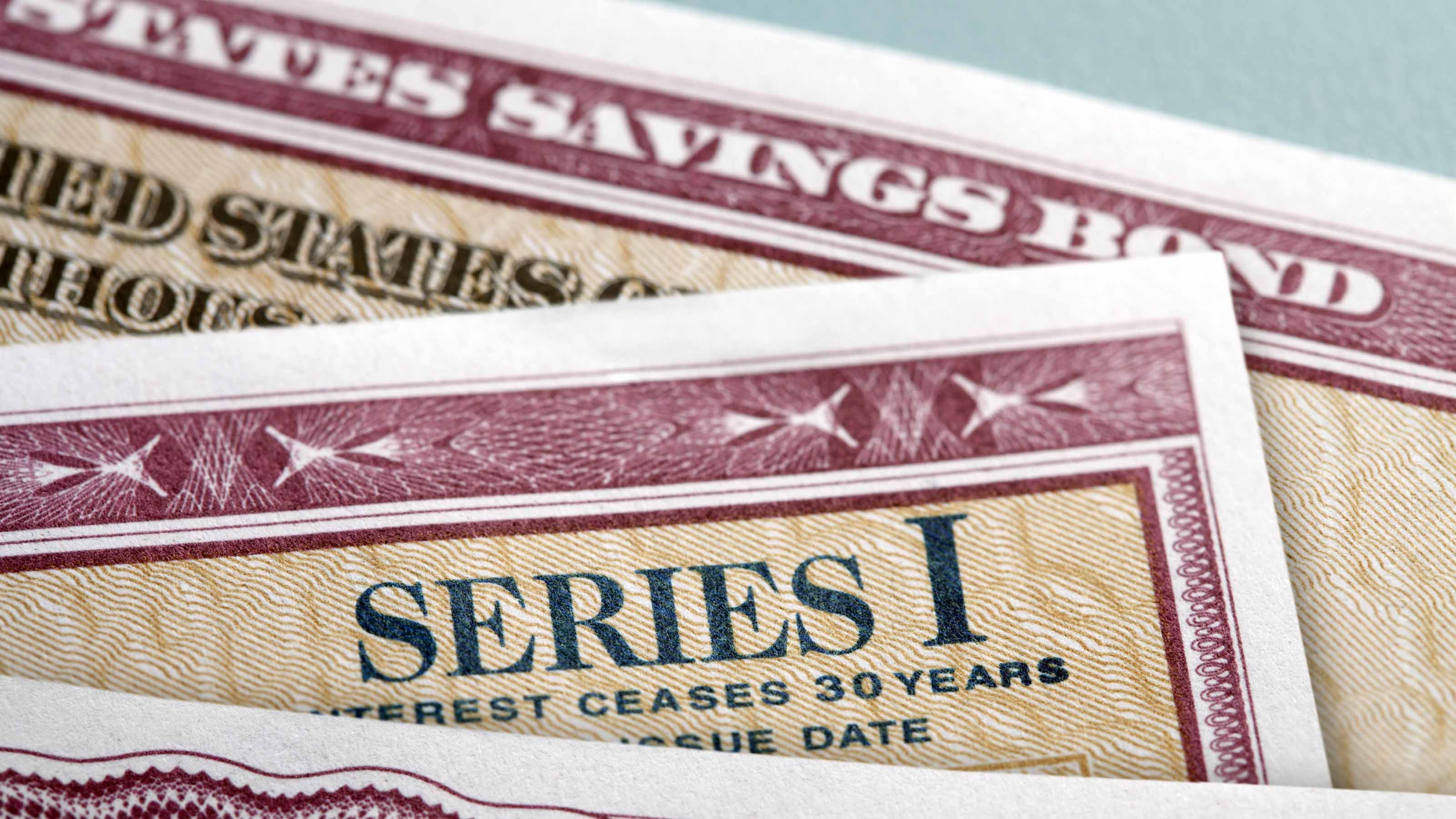Farewell Paper I-Bonds: Savings Bonds Are Going Online-Only
Buying paper I-bonds with your income tax refund won't be possible from January 2025. Tax filers will still be able to buy I-bonds online, however.


Charlotte Gorbold
Since 2012, when banks stopped selling paper savings bonds, buyers have been limited to making their purchases electronically, with one exception: You could buy up to $5,000 in paper series I savings bonds (I-bonds) with your IRS tax refund each year.
But starting January 1, 2025, that option will no longer be available.
Why are paper I-bonds being ditched?
The Tax Time Savings Bonds (TTSB) program was launched in 2010 to give tax filers the ability to buy paper I-bonds using their tax refunds. However, on average, only 35,000 people used this program to buy paper bonds each year, according to the IRS.

Sign up for Kiplinger’s Free E-Newsletters
Profit and prosper with the best of expert advice on investing, taxes, retirement, personal finance and more - straight to your e-mail.
Profit and prosper with the best of expert advice - straight to your e-mail.
That represented just 0.03% of all tax filers, and less than 10% of I-bond purchasers. The IRS says that running the program is costly and mailing paper bonds leaves them open to fraud, theft, loss and delays.
Can I still buy paper I-bonds if I haven’t filed my 2023 tax return yet?
Before the program ends, there’s still a chance to buy paper I-bonds if you received an extension to file your 2023 tax return with a deadline of October 15, 2024.
You’ll need to fill in IRS Form 8888, and your bonds will be mailed to you once your tax return has been processed.
What should I do with my existing paper I-bond(s)?
While there’s no obligation to do so, you can convert paper I-bonds to electronic bonds using TreasuryDirect. It’s free to do, and you’ll need to set up an account if you don’t already have one.
Be warned, however: TreasuryDirect can be hard to navigate. And if you’re not ready to go electronic, you can hold onto your paper I-bonds until you’re ready to cash them.
Should I buy electronic I-bonds in future?
At TreasuryDirect.gov, you can buy up to $10,000 in electronic I-bonds each year, and also $5,000 in I-bonds if you use your tax return to buy them. Bonds issued from May through October 2024 have a composite yield of 4.28%, including a fixed rate of 1.3% and an inflation rate (which adjusts every six months) of 1.48%.
In November, the Treasury Department will set a new semiannual inflation rate based on the consumer price index, as well as a fixed rate for bonds issued from November 2024 through April 2025.
While rates may not compare especially well to the best high-yield savings accounts and the best CD rates, which are giving returns over 5%, bonds are still considered a stable and low-risk option for growth.
Note: A version of this item first appeared in Kiplinger Personal Finance Magazine, a monthly, trustworthy source of advice and guidance. Subscribe to help you make more money and keep more of the money you make here.
Related content
Get Kiplinger Today newsletter — free
Profit and prosper with the best of Kiplinger's advice on investing, taxes, retirement, personal finance and much more. Delivered daily. Enter your email in the box and click Sign Me Up.

Lisa has been the editor of Kiplinger Personal Finance since June 2023. Previously, she spent more than a decade reporting and writing for the magazine on a variety of topics, including credit, banking and retirement. She has shared her expertise as a guest on the Today Show, CNN, Fox, NPR, Cheddar and many other media outlets around the nation. Lisa graduated from Ball State University and received the school’s “Graduate of the Last Decade” award in 2014. A military spouse, she has moved around the U.S. and currently lives in the Philadelphia area with her husband and two sons.
- Charlotte GorboldKiplinger Contributor
-
 I'm 68 with $3.1 million and I want to keep working, but my spouse says it's time to call it quits.
I'm 68 with $3.1 million and I want to keep working, but my spouse says it's time to call it quits.I love my job and I love my wife. Can't I have both?
-
 Rich, Single and Saving Smart: How to Maximize Your Money
Rich, Single and Saving Smart: How to Maximize Your MoneyHigh-net-worth individuals often have plenty of cash on hand, but to truly maximize your income, that money needs to work for you. Here’s how.
-
 Rich, Single and Saving Smart: How to Maximize Your Money
Rich, Single and Saving Smart: How to Maximize Your MoneyHigh-net-worth individuals often have plenty of cash on hand, but to truly maximize your income, that money needs to work for you. Here’s how.
-
 NOBL: An ETF For Dividend Aristocrats
NOBL: An ETF For Dividend AristocratsThe S&P 500 Dividend Aristocrats index consists of companies that have increased dividends for at least 25 consecutive years — and only one U.S. fund tracks it.
-
 6 Luxury Cars With Few Recalls This Past Decade
6 Luxury Cars With Few Recalls This Past DecadeRecalls help keep drivers safe, but too many can signal reliability problems and cause buyer’s remorse. Here are the most reliable luxury rides.
-
 Five Opportunities if You're in the 2% Club in Retirement
Five Opportunities if You're in the 2% Club in RetirementIf you're among the 2% of the population with both a pension and $1 million or more saved, you're in a unique yet complex position as you approach retirement.
-
 I'm an Insurance Expert: This Is How You Get the Right Insurance Coverage at the Right Price
I'm an Insurance Expert: This Is How You Get the Right Insurance Coverage at the Right PriceFirst, you have to know what you want and ask the right questions of the right professional. This insurance pro explains exactly how to do that.
-
 Five States Where AAA Can Renew Your Driver's License — No DMV Visit Needed
Five States Where AAA Can Renew Your Driver's License — No DMV Visit NeededA trip to the DMV can be a painful experience. Skip the line and visit your AAA office to get your REAL ID (select states only).
-
 Stock Market Today: Stocks Rise on Trump Trade Deal
Stock Market Today: Stocks Rise on Trump Trade DealThe U.S. and the U.K. agreed to a trade agreement that includes lower automobile tariffs.
-
 Sugar Rush: Kentucky Boy Orders $4,000 in Lollipops from Mom's Phone
Sugar Rush: Kentucky Boy Orders $4,000 in Lollipops from Mom's PhoneA Kentucky mom was surprised to find her son ordered 70,000 lollipops from Amazon. Here's how to ensure a similar oopsie doesn't happen to you.